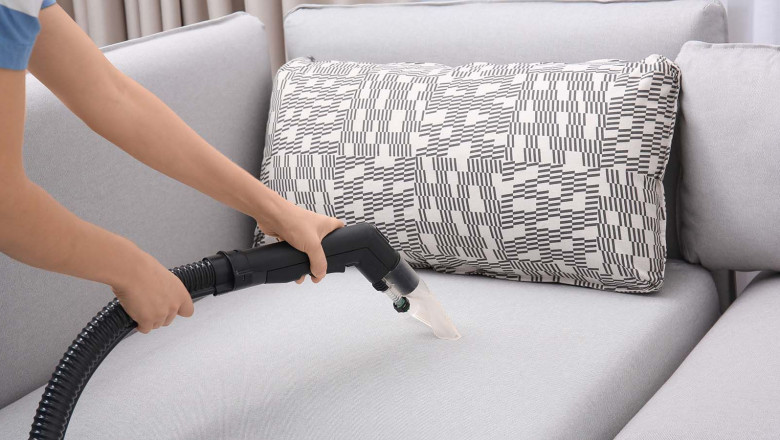views
Why Upholstery Cleaning is Important
Regular upholstery cleaning is crucial for several reasons:
- Enhanced Air Quality: Dust and allergens trapped in fabric can negatively impact the air you breathe.
- Improved Aesthetics: Clean upholstery elevates the overall look of your living spaces.
- Prolonged Lifespan: Removing dirt and grime helps protect the fabric from wear and tear.
Investing time and effort into proper upholstery cleaning ensures a healthier and more beautiful environment for your family.
How to Identify Your Upholstery Type
Before diving into upholstery cleaning, it’s vital to know the type of fabric you’re working with. Check the manufacturer’s label for codes like:
- W: Safe for water-based cleaners.
- S: Requires solvent-based cleaners.
- WS: Compatible with both water and solvent cleaners.
- X: Vacuum-only cleaning is recommended.
Knowing your fabric type prevents accidental damage during the cleaning process.
Essential Tools for Upholstery Cleaning
To achieve professional results, gather the following tools:
- Vacuum Cleaner with attachments
- Soft-Bristled Brushes
- Microfiber Cloths
- Specialized Upholstery Cleaners
- Steam Cleaner (optional for deep cleaning)
Having the right equipment ensures an effective and efficient upholstery cleaning process.
Step-by-Step Upholstery Cleaning Process
1. Start with Vacuuming
Use a vacuum cleaner with a crevice tool and upholstery attachment to remove loose dirt, crumbs, and pet hair. Focus on seams, crevices, and corners.
2. Spot Test Cleaners
Always perform a spot test on an inconspicuous area to ensure the cleaner doesn’t damage or discolor the fabric.
3. Treat Stains Promptly
For stubborn stains:
- Blot (don’t rub) with a clean cloth to lift as much of the spill as possible.
- Apply a suitable cleaning solution according to the fabric’s needs.
- Gently blot and rinse with a damp cloth.
4. Use a Steam Cleaner (If Safe)
A steam cleaner is excellent for deep-cleaning fabric upholstery. Follow the machine’s instructions carefully, avoiding over-saturation.
5. Allow to Dry Completely
Ensure proper ventilation in the room to speed up the drying process. Use fans if necessary to avoid damp odors.
Homemade Upholstery Cleaning Solutions
For a budget-friendly approach, try these DIY cleaning solutions:
- For General Cleaning: Mix warm water with a few drops of dish soap and white vinegar.
- For Stains: Combine baking soda with water to create a paste and gently scrub the area.
- For Odors: Sprinkle baking soda over the fabric, let sit for 30 minutes, and vacuum thoroughly.
Homemade cleaners can be effective for light maintenance, though professional products may be necessary for tough stains.
Professional Upholstery Cleaning Services
For heavily soiled or delicate fabrics, consider hiring a professional service. They use advanced equipment and safe cleaning agents tailored to your upholstery’s needs. Professional cleaners can:
- Remove deep-seated dirt and allergens.
- Restore your furniture’s original appearance.
- Prolong the lifespan of your upholstery.
Preventive Tips for Maintaining Clean Upholstery
To reduce the frequency of deep upholstery cleaning, follow these preventive tips:
- Use protective covers or throws to shield furniture from spills and stains.
- Rotate cushions regularly to ensure even wear.
- Vacuum upholstery weekly to prevent dirt buildup.
- Keep pets off furniture or designate specific pet-friendly areas.
Consistency in maintenance is key to enjoying clean and comfortable furniture.
Conclusion
Effective upholstery cleaning is essential for a clean and inviting home. By understanding your fabric type, using the right tools, and following proven cleaning techniques, you can keep your furniture looking its best for years to come. Whether you opt for DIY methods or professional services, regular maintenance will ensure your upholstery remains a centerpiece of your living space.






















Comments
0 comment